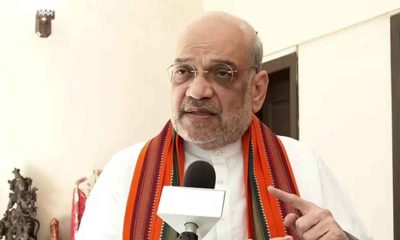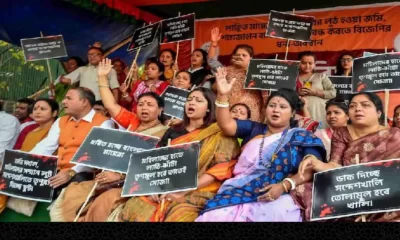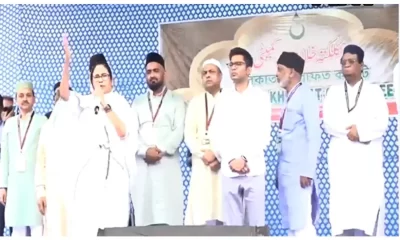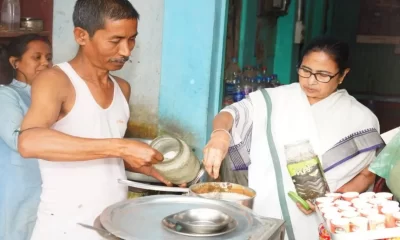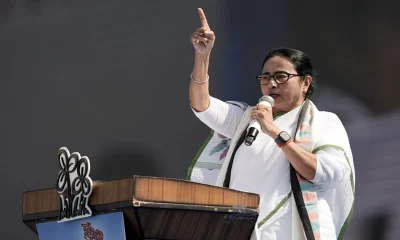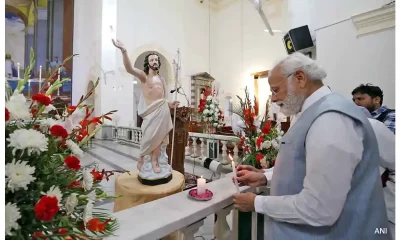India News
Mamata out to muzzle campuses?
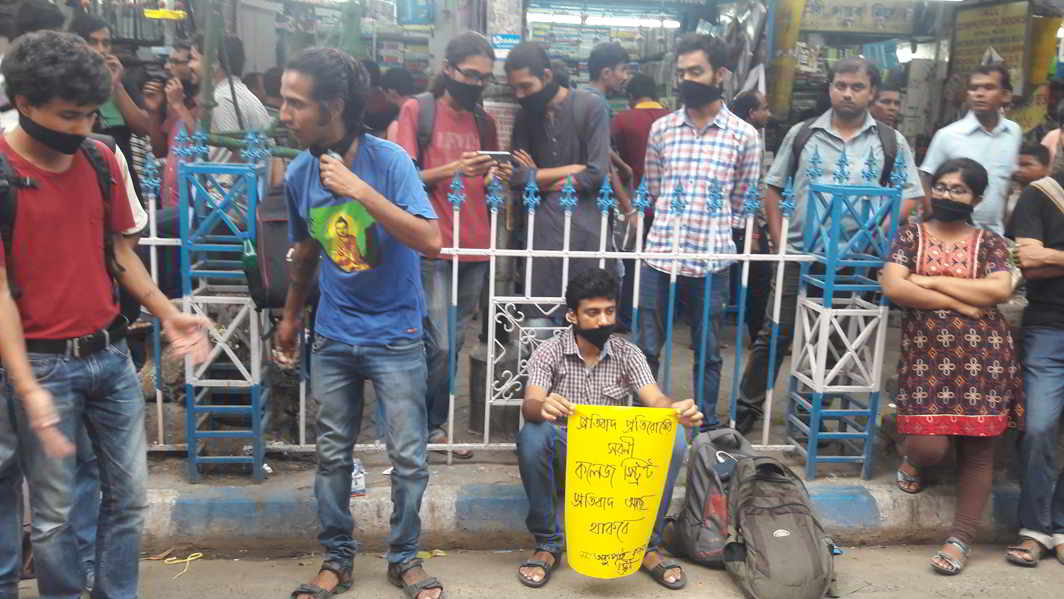
[vc_row][vc_column][vc_column_text]Coming close on the heels of the College Square rally ban, the new student election rules promulgated by the state government have raised the hackles of many citizens
By Sucheta Dasgupta
Student politics has traditionally been the first stepping stone to legislature for most politicians worth their salt in the state of West Bengal.
Last week, the Mamata Banerjee government framed rules under the West Bengal Universities and Colleges (Administration and Regulation) Act 2017, purportedly to depoliticise campuses. They are yet to be notified but are sure to raise the hackles of many an activist or even neutral-minded citizens.
Students will henceforth be barred from contesting elections on political parties’ symbols. The student union will be replaced by the student council of which the president and the vice-president will be teachers nominated by the vice-chancellor. The treasurer who will control the flow of funds will also be a teacher. Elections will be held only for the post of class representative, once every two years. The general secretary will be a student elected by all the class representatives in the first meeting of the council.
There are additional stipulations—candidates must have at least 60 percent attendance, no criminal record, reasonably good academic performance and, once elected, cannot serve more than two terms.
The rules are set to become effective in the 2018 campus elections in the state.
The new regulations, however, seem to have arrived at a time when totalitarianism by governments is slowly gaining ground all over the country. For instance, in Telangana’s Hyderabad, the public relations officer of Osmania University, a hotbed of pro-beef agitations and Dalit protests, has also last week issued a note proscribing all political activity, including public meetings, on campus.
And in April, the Jawaharlal Nehru University— following a recent University Grants Commission’s notification—announced a massive reduction in student intake for its MPhil and PhD courses for the upcoming academic session, seen by many quarters as punishment by the centre for its 2016 stir that followed the arrest of JNU Students’ Union president from AISF and PhD scholar Kanhaiya Kumar.
Which begs the question, are ruling parties and their unions finding themselves on the back foot on these campuses, at least as far as electoral politics is concerned?
Trinamool Congress’ students union TMCP has slowly managed to gather influence in educational institutions across the state but so far it has failed to manage a breakthrough in the prestigious and politically significant Presidency College and Jadavpur University. Here the main forces are still the SFI, the students’ wing of the CPM, and, in case of Presidency, the Independent Consolidation, a coalition of anti-SFI forces like Chhatra Parishad (Congress), Naxalites, SUCI and DSO.
The IC won the student elections this year with SFI presenting it with a tough fight. In JU, the SFI made a comeback in the arts faculty while TMCP lost the polls to all five office-bearers’ posts.
So these steps, which many might call undemocratic, might well be a plan to muzzle campus politics, coming as they do on the heels of the June 1 rally ban at historic College Square, College Street, in central Kolkata—which is witness to the freedom struggle, the Naxalite uprisings and even the popular movement that brought Banerjee herself to power and has been the protest hub of Kolkata since the 19th century. The ostensible trigger for the ban was a student’s putative complaint to the CM that they found it hard to study amid the noise generated by the protests in the area.
Interestingly, a group of individuals led by theatre artistes Joyraj Bhattacharjee and Shreyasi Bhaduri and poet and academic Nandini Dhar, picking lampoon and hyperbole as their weapons of choice, have been holding a silent protest at the very spot for over a week now. As participants do little more than loiter or sit in the area, wearing strips of black cloth covering their mouths, reading, holding placards and making street art, police have no ground to arrest them and, though present in strength, can only stand and stare.[/vc_column_text][/vc_column][/vc_row]
2024 Lok Sabha Elections
Lok Sabha election 2024: Nearly 50% voter turnout recorded in second phase till 3 pm
The constituencies going to polls today include all 20 Lok Sabha seats in Kerala, 14 in Karnataka, 13 in Rajasthan, and others spread across different states.
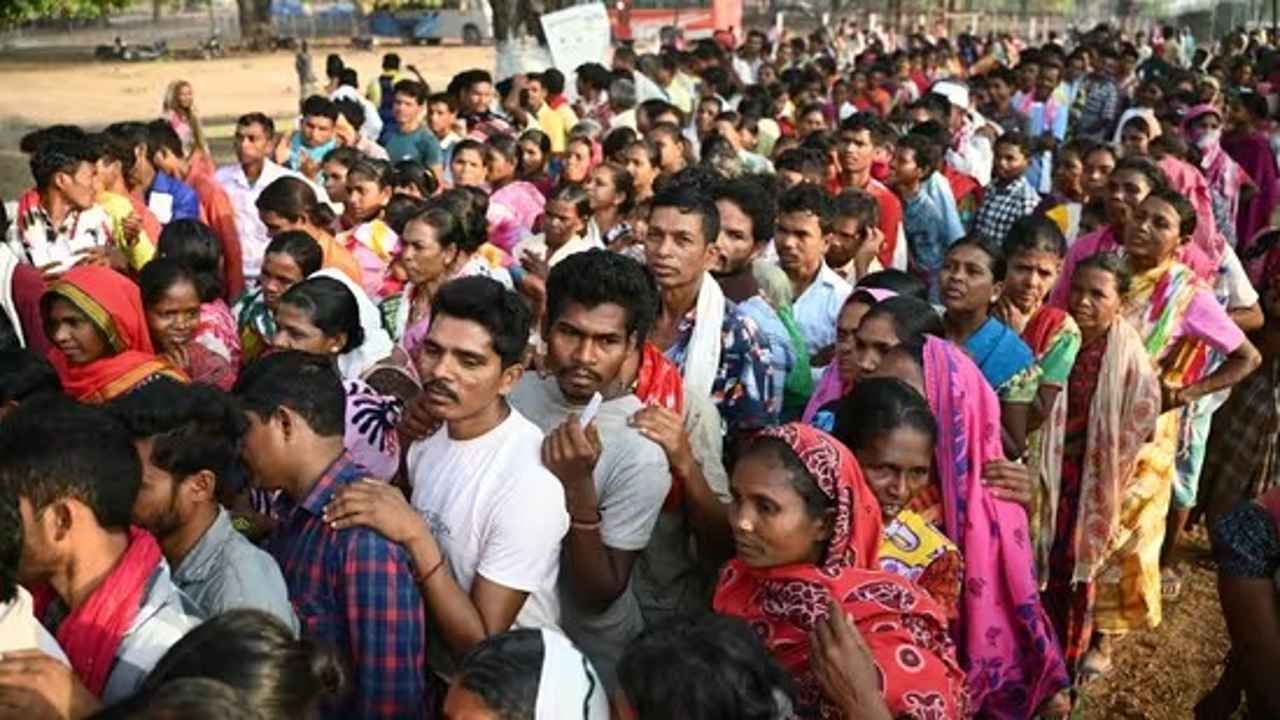
In the second phase of Lok Sabha elections 2024, over 50% of voters were registered in 13 states and the UTs till 3 p.m. 65% of voters participated in the first round of the Lok Sabha elections.
The 18th Lok Sabha elections are currently in their second phase, with voting for 88 seats taking place across 13 states and union territories. There are more than 1,200 people running for office, four of them are from outside Manipur.
Union minister Rajeev Chandrasekhar, BJP members Tejasvi Surya, Hema Malini, and Arun Govil, Rahul Gandhi and Congress leader Shashi Tharoor, DK Suresh, the brother of Karnataka Deputy Chief Minister DK Shivakumar, and former chief minister HD Kumaraswamy are among the notable contenders for the second phase.
In 2019, the NDA had won 56 of the 89 seats and the UPA 24. Six of these seats have been redrawn as part of the delimitation exercise.
The first phase of the seven stages of the elections took place on Friday, including 102 seats spread across 21 states and Union territories. Voter turnout was about 65.5% in the first phase, according to the reports.
In biggest festival of democracy, people from all walks of sector took part in it. A video went viral where former India captain and current Indian team head coach Rahul Dravid and former India player and head coach Anil Kumble were seen standing in line to cast their vote.
Meanwhile, voting started at 7 a.m. and will end at 6 p.m. The Election Commission has extended voting hours for those who are in line by an hour. According to Election Commission figures, the first two hours saw a 9.3% voter turnout throughout the 88 constituencies. By 9 am, Kerala had recorded 8.52%, Karnataka 9.21%, and Madhya Pradesh 13.82%.
In this phase, there were about 15.88 crore eligible voters, comprising 5.929 third-gender electors, 8.08 crore males, and 7.8 crore women. 3.28 crore young voters, aged 20 to 29, are among them; 34.8 lakh of them are first-time voters.
2024 Lok Sabha Elections
Lok Sabha elections 2024: 102-year-old man walks to polling booth to cast his vote in Jammu
The lowest voter turnout so far was noted in Ramgarh at 1.53%.

A 102-year-old man showed up at a Jammu polling place to cast his vote in the second phase of the Lok Sabha elections on Friday. Haji Karam Din arrived at the Reasi district polling place in the Jammu constituency with a walking stick in hand and a family member who assisted him with the pre-voting process.
Haji Karam Din, who is 102-year-old, showed his inked finger and posed for pictures outside the polling booth after casting his vote. He said voting at this polling place at this age makes him very happy. He has always cast his vote. Even at the age of 102, this experience is still ongoing, he said.
Reasi district is a part of the Jammu parliamentary constituency, and 22 candidates are up for vote with around 17.81 lakh eligible voters.
BJP’s sitting member Jugal Kishore Sharma is aiming for a third term in office following wins in the elections of 2014 and 2019. Former minister and Congress candidate Raman Bhalla is his main opponent.
Voting in the Jammu-Reasi Lok Sabha constituency began with eager voters showing up at the polling places. Some of them were wearing traditional Dogra attire.
In 2,416 polling places around the constituency, voting got underway at 7 a.m., and 10.39% of the total votes were cast by 9 a.m. In the 2019 Lok Sabha elections, Jammu recorded a 74% voter turnout.
Following the repeal of Article 370 and the division of the former state into two Union Territories five years ago, this is Jammu’s first significant election.
The Akhnoor segment received the highest percentage of votes, 14.24%, followed by Reasi (14.13%), Gulabgarh (13.53%), Shri Mata Vaishnodevi (12.71%), Marh (12.31%), Samba (8.56%), R S Pura Jammu South (8.17%), and Suchetgarh (5.67%), according to the officials. Ramgarh recorded the lowest voter participation of 1.53% so far.
Low attendance was observed in the border areas of the districts of Jammu and Samba till nine in the morning, according to poll data.
The officials said that big lines of voters were observed at several polling places throughout Jammu city. Voters were observed heading towards polling places early in the morning.
India News
Salman Khan house firing case: NIA interrogates arrested shooters Sagar Pal, Vicky Gupta for three hours

The investigation into the shocking firing incident that took place outside Salman Khan’s house on April 14 keeps bringing new updates with every passing day. In this case, Sagar Pal and Vicky Gupta, the two suspected shooters, have already been taken into custody.
The two shooters have reportedly been questioned by the National Investigation Agency (NIA), according to a new development. Every day that goes by, more information is revealed about the inquiry into the shocking firing incident that happened outside Salman Khan’s house on April 14. Sagar Pal and Vicky Gupta, the two accused shooters, are being held in custody after their first arrests.
It was recently discovered that the two shooters were questioned by the National Investigation Agency (NIA).
NIA has reportedly begun questioning Sagar Pal and Vicky Gupta, who were detained a few days ago for firing openly outside Salman Khan’s Galaxy Apartments in Mumbai, according to a recent update posted on their X (Twitter) account. NIA has interrogated shooters Vicky Gupta and Sagar Pal, arrested in the firing case, the tweet said.
According to the reports, two Punjabi residents were taken into custody by the Mumbai Crime Branch yesterday on suspicion of being involved in the recent shooting incident outside the house of Bollywood actor Salman Khan.
The two men, Sonu Subhash Chander and Anuj Thapan, provided guns to Sagar Pal and Vicky Gupta, the shooters, according to information released by the Mumbai Crime Branch. It was also reported that they had communication with the Bishnoi gang. For those who don’t know, hours after the incident, Anmol Bishnoi, the brother of gangster Lawrence Bishnoi, allegedly took credit for the firing in a Facebook post.
The shooters’ custody has been extended by Mumbai’s Esplanade Court until April 29.
Meanwhile, on the workfront Salman Khan was last seen in Tiger 3 alongside Katrina Kaif.
-
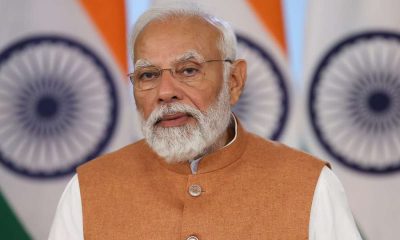
 2024 Lok Sabha Elections17 hours ago
2024 Lok Sabha Elections17 hours agoPM Modi calls for high voter turnout in second phase of Lok Sabha elections 2024, says your vote is your voice
-
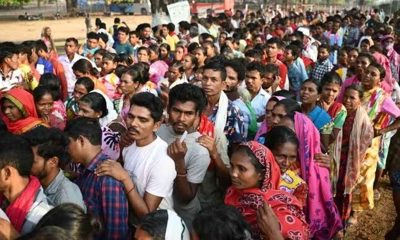
 2024 Lok Sabha Elections11 hours ago
2024 Lok Sabha Elections11 hours agoLok Sabha election 2024: Nearly 50% voter turnout recorded in second phase till 3 pm
-
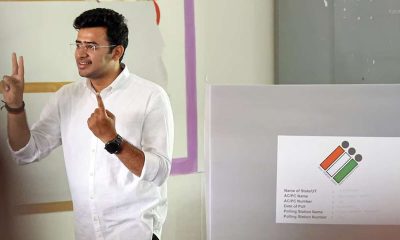
 2024 Lok Sabha Elections10 hours ago
2024 Lok Sabha Elections10 hours agoElection Commission books BJP MP Tejasvi Surya for seeking votes in the name of religion
-

 India News16 hours ago
India News16 hours agoSalman Khan house firing case: NIA interrogates arrested shooters Sagar Pal, Vicky Gupta for three hours
-
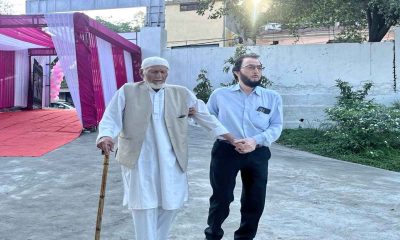
 2024 Lok Sabha Elections14 hours ago
2024 Lok Sabha Elections14 hours agoLok Sabha elections 2024: 102-year-old man walks to polling booth to cast his vote in Jammu

